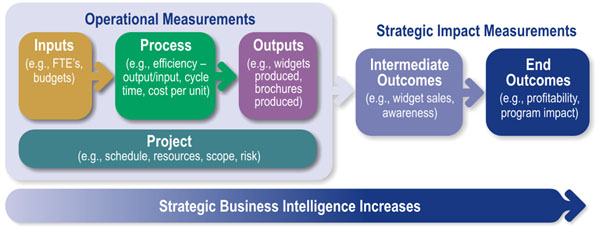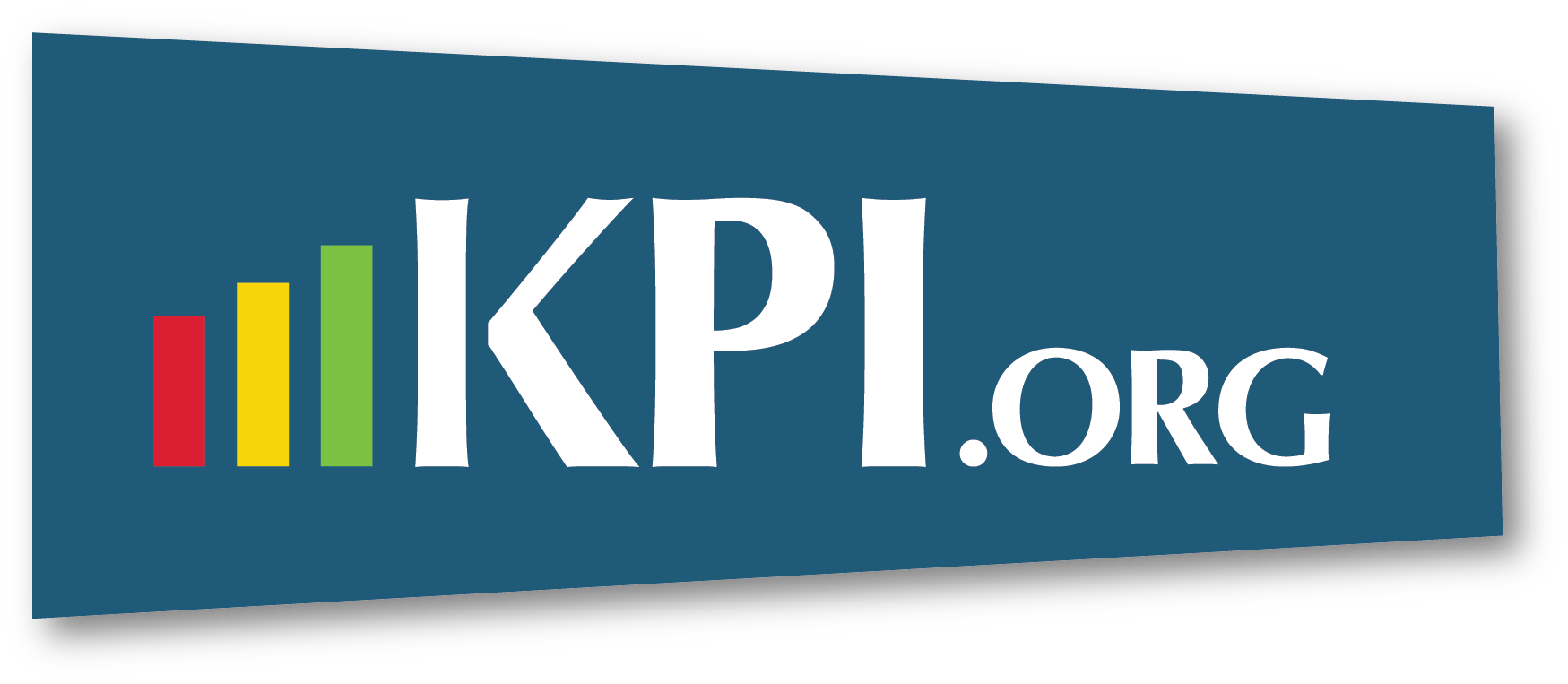What is a Key Performance Indicator (KPI)?
What is a Key Performance Indicator (KPI)?
Peter Drucker famously said, “What gets measured gets done.” Measurement is an essential management tool, as it helps us determine if our work is making an impact, demonstrate value, manage resources, and focus improvement efforts.
Key Performance Indicators (KPIs) are the critical (key) quantifiable indicators of progress toward an intended result. KPIs provide a focus for strategic and operational improvement, create an analytical basis for decision making and help focus attention on what matters most.
Managing with the use of KPIs includes setting targets (the desired level of performance) and tracking progress against those targets.
Managing with KPIs often means working to improve performance using leading indicators, which are precursors of future success, that will later drive desired impacts indicated with lagging measures.

Good KPIs:
- Provide objective evidence of progress towards achieving a desired result
- Measure what is intended to be measured to help inform better decision making
- Offer a comparison that gauges the degree of performance change over time
- Can track efficiency, effectiveness, quality, timeliness, governance, compliance, behaviors, economics, project performance, personnel performance or resource utilization
- Are balanced between leading and lagging indicators

Terminology Examples

Let’s say my business provides coffee for catered events. Some inputs include the coffee (suppliers, quality, storage, etc.), the water, and time (in hours or employee costs) that my business invests. My process measures could relate to coffee making procedure or equipment efficiency or consistency. Outputs would focus on the coffee itself (taste, temperature, strength, style, presentation, accessories, etc.). And desired outcomes would likely focus on customer satisfaction and sales. Project measures would focus on the deliverables from any major improvement projects or initiatives, such as a new marketing campaign.

Let’s say someone wants to use KPIs to help them lose weight. Their actual weight is a lagging indicator, as it indicates past success, and the number of calories they eat per day is a leading indicator, as it predicts future success. If the person weighs 250 lbs / 113 kg (a historical trend is called a baseline), and a person they would like to emulate is 185 lbs / 84 kg (comparison research is called benchmarking), they might set an 1,700 calorie-per-day target (desired level of performance) for the leading KPI in order to reach their lagging KPI target of 185 lbs / 84 kg by the end of a year.
The Logic of Different Types of Measures
The relative business intelligence value of a set of measurements is greatly improved when the organization understands how various metrics are used and how different types of measures contribute to the picture of how the organization is doing. KPIs can be categorized into several different types:
- Inputs measure attributes (amount, type, quality) of resources consumed in processes that produce outputs
- Process or activity measures focus on how the efficiency, quality, or consistency of specific processes used to produce a specific output; they can also measure controls on that process, such as the tools/equipment used or process training
- Outputs are result measures that indicate how much work is done and define what is produced
- Outcomes focus on accomplishments or impacts, and are classified as Intermediate Outcomes, such as customer brand awareness (a direct result of, say, marketing or communications outputs), or End Outcomes, such as customer retention or sales (that are driven by the increased brand awareness)
- Project measures answer questions about the status of deliverables and milestone progress related to important projects or initiatives
Every organization needs both strategic and operational measures, and some typically already exist. An entire family of measures can be developed to help understand how effective strategy or operations is being executed, from various categories:
- Strategic Measures track progress toward strategic goals, focusing on intended/desired results of the End Outcome or Intermediate Outcome. When using a balanced scorecard, these strategic measures are used to evaluate the organization’s progress in achieving its Strategic Objectives depicted in each of the following four balanced scorecard perspectives:
-
- Customer/Stakeholder
- Financial
- Internal Processes
- Organizational Capacity
- Operational Measures, which are focused on operations and tactics, and designed to inform better decisions around day-to-day product / service delivery or other operational functions
- Project Measures, which are focused on project progress and effectiveness
- Risk Measures, which are focused on the risk factors that can threaten our success
- Employee Measures, which are focused on the human behavior, skills, or performance needed to execute strategy

